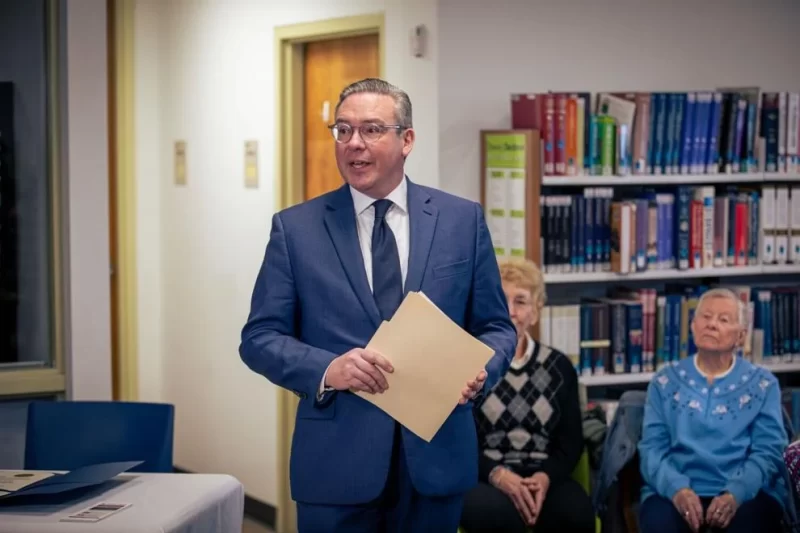By Anthony Hennen | The Center Square
(The Center Square) — As Pennsylvania has lost experienced election workers, state leaders are calling on the public to serve in April and November.
On Tuesday, Secretary of the Commonwealth Al Schmidt visited the East Shore Library in Harrisburg to encourage more civic engagement.
“On election day, the most important people are not the secretary of state, it is not your county commission, it’s not even your county election director,” Schmidt said. “It’s the men and women who volunteer for essentially a 14-hour day to make sure you can cast your vote and have your vote counted.”
The state has a small cadre of election workers; in December, Schmidt estimated that fewer than two dozen people work on elections full-time in the Department of State. The workforce, instead, is on the local level.
“Poll workers are really the frontlines of our representative democracy,” he said.
The election workforce encompasses 45,000 poll workers across 9,000 places in Pennsylvania. Workers must be registered, eligible voters and get paid for training and for election day work. Seventeen-year-olds can also volunteer.
The push to recruit volunteers fell on Help America Vote day.
“Serving as a poll worker is one of the most rewarding acts of civic engagement you can ever perform,” Schmidt said. “I urge any eligible Pennsylvanian who wants to help strengthen democracy to become a poll worker.”
The secretary’s call for volunteers comes as Pennsylvania has lost many election workers in recent years. Since 2020, almost two dozen senior county administrations have left their posts. That loss of experience has meant more human errors causing minor or major hiccups on election day.
To avoid those problems, the Department of State is providing training to county election workers and sending out more guidance on how to run elections.
“Our entire system of government, from top to bottom, is really set up in a bipartisan way so you have checks and balances, so you make sure that more than one party is represented at the polls when you’re casting your way,” Schmidt said.
